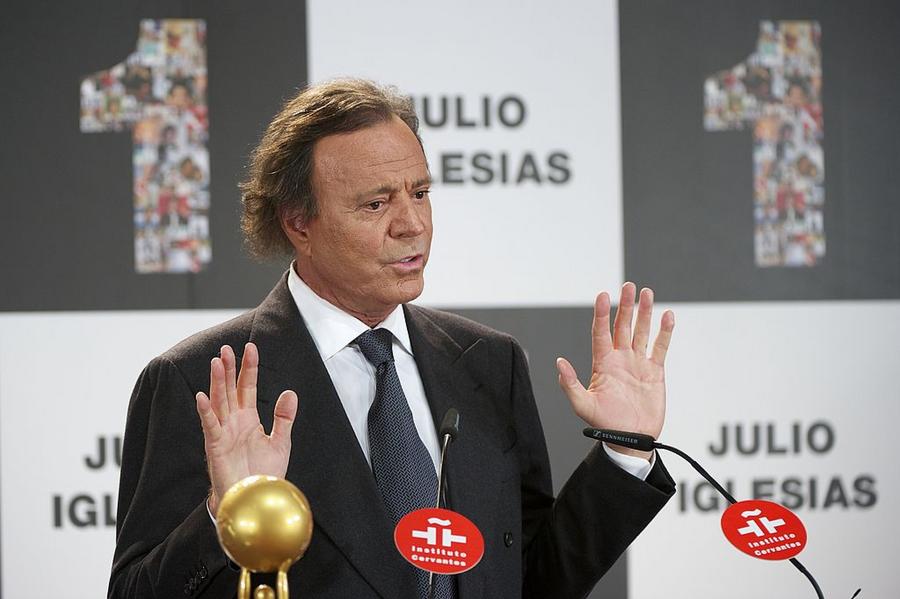Julio Iglesias at a Glance
- Categories: Celebrities, Celebrities > Singers
- Net Worth: $600 Million
- Birthdate: Sep 23, 1943 (80 years old)
- Birthplace: Madrid
- Gender: Male
- Profession: Singer, Songwriter, Singer-songwriter, Composer
- Nationality: Spain
- Height: 6 ft (1.85 m)
Julio Iglesias’ Net Worth: A Look at the Legendary Singer’s Wealth and Career
What is Julio Iglesias’ Net Worth?
Julio Iglesias, the iconic Spanish singer and songwriter, has captivated audiences worldwide with his romantic ballads and charismatic performances. Beyond his musical achievements, many are curious about the financial success that has accompanied his illustrious career. As of 2024, Julio Iglesias’ net worth is estimated to be a remarkable $600 million. This impressive figure reflects not only his vast album sales but also his diverse business ventures and shrewd investments over several decades.
Early Life and Unexpected Beginnings
Born Julio José Iglesias de la Cueva on September 23, 1943, in Madrid, Spain, Julio Iglesias’ early life didn’t necessarily foreshadow a career in music. His father, Julio Iglesias Sr., was a medical doctor of Galician ancestry, and his mother, Maria del Rosario de la Cueva y Perignat, had Jewish roots. In his youth, Iglesias pursued a law degree at CEU San Pablo University while also showing promise in professional football. He served as a goalkeeper for Real Madrid Castilla in the Segunda Division, a testament to his athletic abilities. However, a severe car accident in his early twenties abruptly ended his football career, leaving him unable to walk for two years due to a smashed lower spine and weakened legs. It was during his hospital recovery that a nurse gave him a guitar to exercise his hands. This seemingly small gesture would change the course of his life forever, as he discovered a passion for music and began to hone his vocal and songwriting skills. This unexpected twist of fate set the stage for one of the most successful music careers in history.
From Local Fame to International Superstar: Iglesias’ Rise
Iglesias’ musical journey began in earnest in 1968 when he won the Benidorm International Song Festival, a significant songwriting competition in Spain. His winning entry, the song “La vida sigue igual” (“Life Goes On the Same”), marked the beginning of his professional career. He quickly signed with Discos Columbia, the Spanish arm of Columbia Records, and released his debut album, “Yo Canto” (“I Sing”) in 1969. His success continued when he was selected to represent Spain at the 1970 Eurovision Song Contest with his song “Gwendolyne,” securing a respectable fourth-place finish. This early exposure helped establish his name in the European music scene.
Iglesias’ ability to sing in multiple languages, including English, French, Portuguese, German, and Italian, was a key factor in his widespread appeal across Europe during the 1970s. He even recorded a song in Galician, “Un Canto A Galicia,” as a tribute to his father and his heritage. In 1979, Iglesias made a strategic move to Miami, Florida, and signed a deal with CBS International, paving the way for his entry into the English-speaking market. His first major English-language hit was a cover of “Begin the Beguine.”
However, it was the 1984 album “1100 Bel Air Place” that truly propelled him to international stardom. The album achieved remarkable success, selling over 3 million copies in the United States alone. It featured collaborations with prominent American musicians, including Willie Nelson and Diana Ross, showcasing his ability to bridge cultural and musical boundaries. Throughout his career, Iglesias has collaborated with a diverse array of artists, including Stevie Wonder, Frank Sinatra, Dolly Parton, Sting, and Art Garfunkel, further solidifying his status as a global music icon. He has released approximately 80 albums, selling nearly 300 million records internationally in 14 different languages, and has accumulated over 2,600 certified gold and platinum records, a testament to his enduring popularity and influence.

(Photo by Carlos Alvarez/Getty Images)
Awards and Accolades: Recognizing a Global Icon
Julio Iglesias’ contributions to music have been widely recognized through numerous prestigious awards and accolades. He won the Grammy Award for Best Latin Pop Album in 1988 for his album “Un hombre solo.” He received a nomination in the same category a decade later, in 1998, for “Tango” (1996), though he did not win. In 1995, he was honored with the Excellence Award at the Lo Nuestro Awards. In 2001, the Latin Recording Academy named him Person of the Year, and in 2002, he was inducted into the International Latin Music Hall of Fame. His talents extended beyond singing, as he was inducted into the Latin Songwriters Hall of Fame in 2013 as a composer and lyricist.
That same year, Iglesias received significant recognition in China, including the First & Most Popular International Artist of All Time award from Sony Music China, presented by the renowned Chinese musician Lang Lang, and a Guinness World Record for the Best-selling Male Latin Artist. In 2015, Berklee College of Music awarded him an Honorary Doctorate, acknowledging his profound influence on music and international culture. Additional honors include the Spanish National Honors of the Gold Medal of Merit in the Fine Arts and the Gold Medal of the Community of Madrid, alongside foreign distinctions such as the Knight of the Legion of Honor from France and the Medal of the City of Paris, underscoring his impact on a global scale.
Personal Life: Family, Relationships, and Residences
Julio Iglesias’ personal life has also drawn considerable public interest, and has played a significant role in shaping his image. In January 1971, he married Isabel Preysler, a Filipina socialite of Spanish ancestry, and a member of the wealthy Perez de Tagle family. The couple divorced in 1979, but they had three children together: Chabeli, a socialite (born 1971); Julio Jr., a singer (born 1973); and Enrique Iglesias, who has achieved significant success as a singer in his own right. After his divorce, he lived with the Dutch model Miranda Rijnsburger, who is 22 years his junior, and they currently reside in the Dominican Republic. Iglesias became a Dominican citizen in 2005. He and Rijnsburger married in August 2010, and they have five children together: Miguel (born 1997), Rodrigo (born 1999), twins Cristina and Victoria (born 2001), and Guillermo (born 2007). His family life adds another dimension to his multifaceted persona.
Net Worth and Other Ventures: Beyond Music
While his music career is the cornerstone of his wealth, Julio Iglesias has also made substantial investments in various other ventures, contributing significantly to his impressive net worth. He has built an extremely valuable real estate portfolio, including a substantial collection of properties in Miami and the Dominican Republic. In July 2017, he listed four vacant lots on Miami’s Indian Creek Island for a staggering $150 million. His main residence on the same island, purchased in 2012 for $15 million, is now valued at $20-25 million. His worldwide real estate holdings alone are estimated to be worth between $200 and $300 million. In addition to real estate, Iglesias is also involved in the business world. Impressively, he co-owns the main airport in Punta Cana, Dominican Republic, alongside Oscar de la Renta and other investors. He also owns multiple hotel complexes throughout the Dominican Republic, diversifying his sources of income and solidifying his financial success.
Conclusion: The Enduring Legacy of Julio Iglesias
Julio Iglesias’ net worth of $600 million is a testament to a career defined by longevity, talent, and strategic business acumen. From his unexpected entry into music to his global domination, his journey is a compelling narrative of resilience and success. His ability to connect with audiences across cultures and languages has made him one of the best-selling music artists in history. Beyond the financial figures, Iglesias’ legacy is secure in his music, his contributions to the arts, and his enduring impact on the world. His ability to reinvent himself and remain relevant across generations solidifies his place as a true icon of the music industry.

